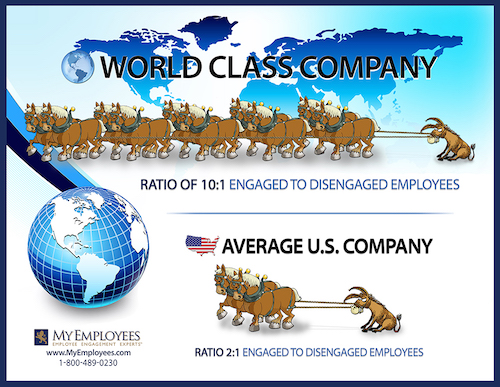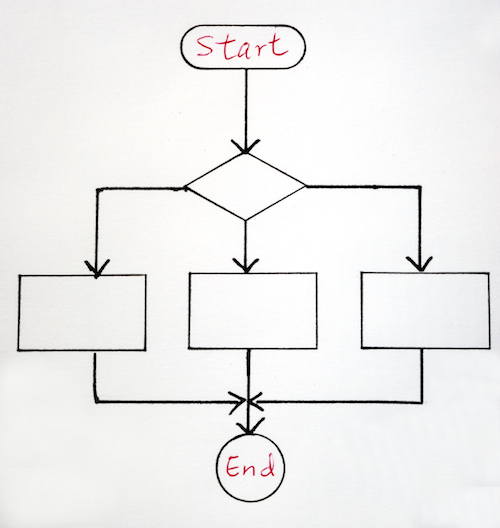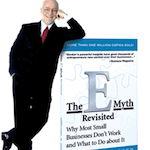In this episode, David Long (on of America’s top 1% income earners!) shares his success tips: the 7 principles that you can duplicate that made him millions!
Tips For Success: David’s 7 Principles – Episode Highlights:
- How David Long turned his life around – from losing his house and moving back to his parents, to starting a company from the garage and growing it to a $10M annual revenue machine
- The 7 actionable principles behind David’s success that you can start applying right now to your business and life
- The secrets behind what makes managers, leaders and entrepreneurs truly great
- How to achieve all this, and be able to take 22 weeks off a year!
The 7 Success & Leadership Principles Of Today’s Guest
25 years ago, David Long was two weeks away from losing his house to foreclosure. He managed to sell his house at the last minute, and moves back to his parents house with his wife and tail tucked between his legs.
In just a couple of years, he had changed jobs seven times, and the job he was currently interviewing for had so many applicants that the interviewing manager announced that the initial salary will be cut by 25% – not enough to plug David’s leaking ship.
Everything he tried seem to have failed and crumbled between his fingers. He was desperate to find a way out of his parents house, and out of the financial hold that he dug. But fast-forward to 2014… David’s company, ‘My Employees’, is projected to make over $10 million in sales this year.
Clearly, a lot of happened in 25 years.
Today, David is in the top 1% of income makers in the entire United States. He takes an average of 22 weeks of every year, which he spends with his wife, family, and friends at his beach house, traveling the world, and riding his bike from coast to coast.
On today’s episode, David shares the seven key principles that allowed him to become a top manager and leader – two key skills when trying to build a great company.
You may scroll to the top of this post and click the “play” button for the entire story behind his business, or carry on reading to find out his top success tips and seven principles for becoming a top manager and leader.
The R.E.W.A.R.D.S. Principles
David’s seven principles for becoming a top 10% manager or entrepreneur are can be memorized with the acronym R.E.W.A.R.D.S.:
- Reconnaissance
- Education
- Winners Emerge
- Attitude
- Recognition
- Duplication
- Success.
Let’s review each one in detail:
1. Reconnaissance
Reconnaissance, or recon, as called in the military, is all about figuring out if you have the right people in your team – both managers (if you have them), and employees.
Research shows that there is a ratio of 10:1 between actively engaged and actively disengaged in world-class companies. In the average company, on the other hand, the ratio drops to 2 engaged employees for every 1 disengaged.
Here’s a visual way to look at it that will make a lot of sense:

Now, a research by the Gallop Research group concluded that having fellow associates that are committed to doing a great job is among the top 10 things that make employees and team members happy.
Every disengaged employee is weighing your business down and slowing everyone else around him (even if it’s just you and a disengaged VA!). And this is what recon is all about:
- Find the disengaged members of your team
- Either fix the issue, or let them go
- Repeat
Or in David’s own words – “Hire, Train, Prune, Repeat!”
2. Education
“Without consistently learning and educating yourself and your staff, you will become roadkill to someone more ambitious than you”, says Long in today’s episode.
Sounds harsh? Maybe, but it also makes great sense.
David attributes most of his success to being an avid reader and listener, and for instilling this trait in all of his employees. In fact, he runs a book club at his company, and pays people to participate!
“Say what?!”, you ask? Yeah, it’s pretty unique. You can hear David talk about it in the interview at 3:20. The Important thing for you to know, is that magic happens in Dave’s book club meetings:
- Employees open up and share personal experiences
- People connect on a much deeper level, and new, more meaningful relationships are formed
- Incredible, life-changing, personal growth happens
- And of course … people learn, A LOT!
The other part of education in Long’s system, is being a part of a mastermind.
Now, masterminds have been discussed many times in this podcast that I’m not going to go into more details about them. You can find more information about them, including a template for setting one up both on IIP034: Live an Enjoyable Life AND Make Millions, The Story of Jaime Tardy – The Eventual Millionaire, and in these additional resources provided by Dave.
3. Winners Emerge
This one is pretty simple to explain: When you start providing growth opportunities, for instance – through book clubs – winners start to emerge. You start noticing unpolished diamonds. The ‘W’ in R.E.W.A.R.D.S. is all about noticing these diamond team members, and investing in them, to create your next leaders.
Remember Zig Ziglar’s famous quote?
“You don’t build a business –you build people– and then people build the business.” –Zig Ziglar.
“Winners emerge” is all about noticing these people, and building them.
4. Attitude
“If you at the world through a clear glass, everything looks clear. But if you sprinkle some dust in that glass, everything will look dirty and cloudy.
“And that is your attitude: If you have a bad attitude, every little thing that happens to you in your life is perceived as [someone is] trying to get me. And you can’t have that in your team. It’s destructive. If someone’s attitude stinks – get rid of him”, says Dave.
“How about family members? friends? relatives?”, I ask.
“If you surround yourself by people with bad attitude it’s going to rub off on you. The top 5 people you hang out with better have a great attitude, or DROP THEM from your list. I don’t care if it’s a relative. Limit your time with that individual if he’s toxic.
“Otherwise, they will wear you down and destroy you as a business person”
I could go on and write more about this, but I think David made this point crystal clear (get the pun?)
5. Recognition
“65% of people in America say that they have received no recognition from their boss in the last year. Not one time in the whole year! “ Dave tells me.
But why is recognition so important? “What you recognize is what’s going to get repeated. What I brag on, is what I’ll see more of. That costs you nothing. It costs you not a single dime to do that. “
Recognition, David explains (at 27:13), is what keeps people engaged. It’s what makes them do a great job. It’s what makes “the game” worth playing.
And speaking of the game… the rules need to be clear. Your employees need to know what you hold important, and to what metrics will they be held accountable to.
If you want to learn how it’s done at David’s company, MyEmployees, listening to what Long shares between 27:40 – 31:45. I got to admit, I never thought about recognition this way before I heard this!
6. Duplication
David has developed in his company what he calls “the shark’s teeth leadership development program”:
Sharks have multiple rows of teeth, so when a shark loses a teeth, a new one immediately fills its place. And Long has modeled his company around this idea:
Every once in a while, he will ask each of his managers two simple questions:
- If (god forbid) something happens to you and you can’t be at work – who’s your #1 guy that can replace you?
- What are you doing right now to continue developing him/her?
This does a couple of things:
- Your most promising employees get invested in, increasing their engagement and their loyalty to you, as well as their value.
- You encourage the creation of systems (that was discussed extensively on Getting Real & The E Myth Revisited and on Standard Operating Procedure Template For Systemizing Your Business) that provide you with scalability and protect you from single points of failure
- Most important – when it’s done from your first employee and onwards – it creates a company like Dave’s – where he can take 22 weeks off and not worry about a single thing!
7. Success
What is your focus? How do you define ultimate success? What matters to you?
For Dave, it’s not the money. It’s growing people; employees, colleagues, friends and family. It’s caring, reaching out, and affect people in a positive way. It’s leaving a lasting impact.
What is success for you? Comment bellow and share, and then… go get it! 🙂
Mentioned Resources
- David Long – Built To Lead homepage,
- MyEmployees (David’s company)
- Built to Lead: 7 Management R.E.W.A.R.D.S Principles for Becoming a Top 10% Manager
- The Ultimate Sales Machine: Turbocharge Your Business with Relentless Focus on 12 Key Strategies
- How To Win Friends and Influence People
- The E-Myth Revisited
- Think and Grow Rich
- The Podcast Starter Kit – FREE 7 Days Video Course: From Zero To Launching Your Successful Podcast
I Need Your Help!
If you haven’t already, I would love if you could be awesome and take a minute to leave a quick rating and review of the podcast on iTunes by clicking on the link below. It’s the most amazing way to help the show grow and reach more people!
Leave a review for Meron’s podcast!
Affiliate Disclosure: Please note that some of the links above are affiliate links. There is no additional cost to you, and I will earn a commission if you decide to make a purchase.
Photo credit: Pile of Books – © chrisdorney – Fotolia.com


















































